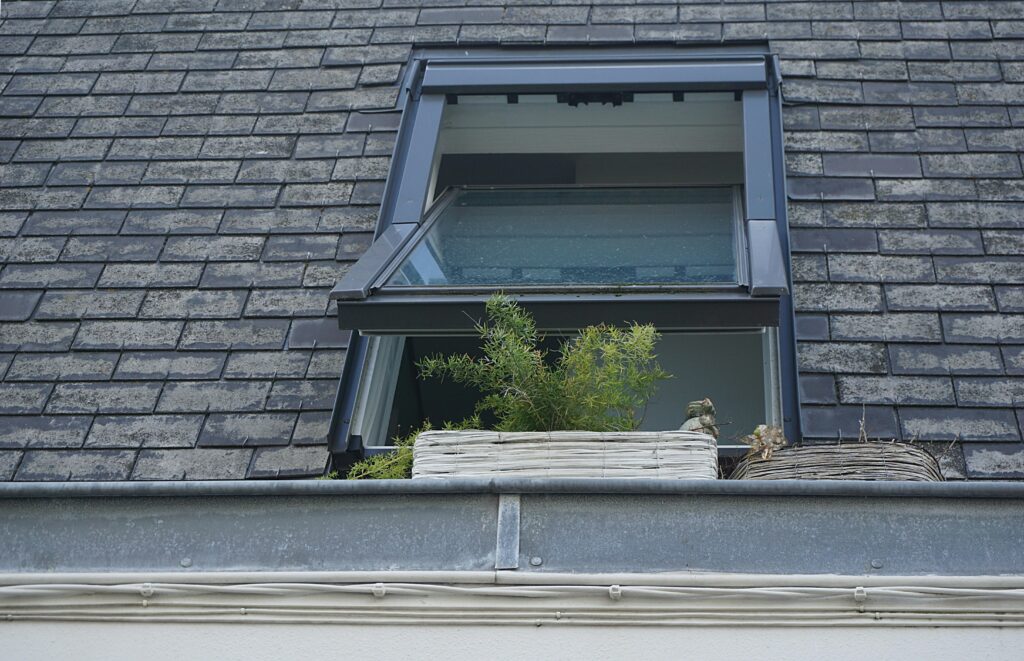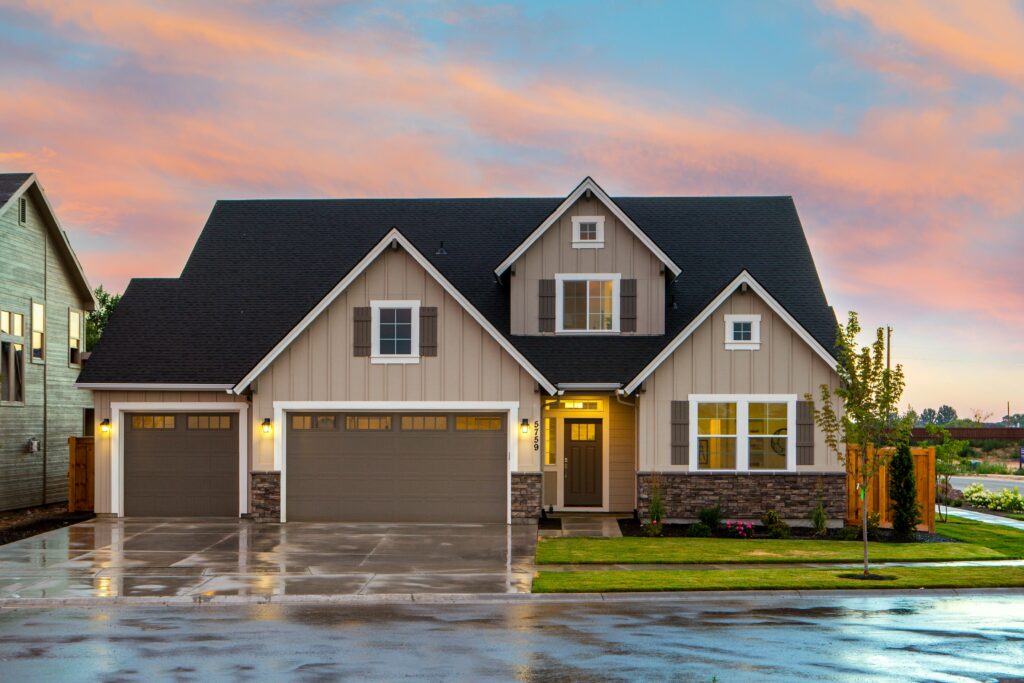Imagine this: it’s the middle of winter, a fierce storm has just passed, and you notice a leak forming on your ceiling. Panic sets in as you wonder whether now is the right time to replace your roof or if you should wait for better conditions. Many homeowners face this dilemma, unsure about the best season to undertake such a critical home improvement project. That’s where understanding the seasonal roof replacement tips and knowing the best time to replace your roof can save you stress, money, and headaches.
In this article, you’ll discover essential insights about seasonal roof replacement tips that will help you make informed decisions regardless of the weather outside. We’ll explore how different seasons impact the roofing process, the practical benefits of scheduling your roof replacement at the optimal time, and common mistakes to avoid that often cost homeowners dearly. Whether you’re dealing with immediate storm damage or are planning ahead for future maintenance, these seasonal roof replacement tips will empower you to choose the perfect moment to replace your roof for maximum durability and value.
Table of Contents
ToggleKey Takeaways
- Ideal Seasons: Aim for spring and early fall when temperatures (50–85°F) and humidity are moderate, ensuring optimal material handling and adhesion.
- Avoid Extremes: Winter’s freezing conditions and summer’s intense heat can compromise shingle sealing and worker safety—plan around these periods.
- Weather Windows: Monitor forecasts and schedule your project during a dry stretch of at least 48 hours to prevent moisture-related issues.
- Cost & Availability: Off-peak seasons often mean lower contractor rates and better scheduling flexibility—but balance savings against weather risks.
- Proactive Inspections: Conduct seasonal roof checks (post-winter, mid-summer, post-fall leaves) to spot damage early and plan replacements before emergencies arise.
- Proper Prep: Regardless of season, thorough cleaning, removal of old shingles, and substrate repairs are non-negotiable for a lasting installation.
- Hire Experienced Pros: Choose contractors familiar with local climate challenges and seasonal best practices to ensure quality and durability.
Why Seasonal Roof Replacement Tips and Knowing the Best Time to Replace Your Roof Matter More Than You Think
When it comes to maintaining the integrity of your home, few things are as crucial as a sturdy, well-maintained roof. The phrase “Seasonal Roof Replacement Tips Best Time to Replace Your Roof” might sound complex at first, but it essentially boils down to understanding how the changing seasons impact your roof and when the optimal time is to undergo replacement. Recognizing this can save homeowners thousands of dollars, protect their homes against damage, and extend the life of their investment.
What Does Seasonal Roof Replacement Really Mean?
The idea of seasonal roof replacement revolves around timing the roof replacement project to align with weather conditions most conducive to facilitating a smooth, efficient, and cost-effective process. Roof replacement is inherently weather-dependent , too much rain, extreme cold, or excessive heat can compromise how well materials install and adhere, potentially weakening the roof in the long term.
For example, roofing materials such as asphalt shingles require dry, moderate weather for proper sealing. Attempting replacements during heavy snowfall or freezing temperatures can cause materials not to seal correctly, leading to leaks or damaged shingles down the road. By contrast, scheduling a replacement during the mild and dry months equips contractors to complete work efficiently with fewer interruptions, optimizing the quality of the installation.
Why Timing Your Roof Replacement is Crucial: Stats & Data
Studies conducted by the National Roofing Contractors Association (NRCA) reveal that roofs replaced in the optimal season show a 25% higher durability rate over five years compared to those replaced during harsher weather. Additionally, cost analyses indicate that contractors often charge lower rates in shoulder seasons (spring and fall) due to more favorable weather and reduced demand, translating to potential savings of up to 15% for homeowners.
Moreover, roof damage spikes during winter storms and summer heatwaves. Thus, understanding when to replace your roof proactively can protect your home from costly emergency repairs. A well-timed roof replacement minimizes risks linked to unexpected leaks, mold growth, and structural decay caused by delayed repairs.
A Real-Life Success Story: The Thompsons’ Roof Replacement Journey
Consider the Thompsons, a family living in the Pacific Northwest, a region notorious for heavy rains in the winter and mild, dry conditions in the late spring and summer. After noticing early signs of roof wear, including curling shingles and minor leaks, they faced a decision: replace their roof immediately in late autumn, or wait until the next spring.
Guided by expert seasonal roof replacement tips, the Thompsons chose to schedule the project in early May. The result was a flawless installation completed in just four days, with no weather delays. The roofing company reported that the dry and moderately warm conditions allowed the shingles to seal perfectly, ensuring durability.
Fast forward two years, their roof has held up against several heavy rainstorms, preventing leaks that previously compromised their attic space and insulation. Their timely and well-planned approach saved them from frequent repairs and increased their property value, a real testament to why knowing the best time to replace your roof is invaluable.
In Summary
Understanding seasonal roof replacement tips and knowing the best time to replace your roof is far more than scheduling convenience, it’s about maximizing your roof’s lifespan, avoiding extra expenses, and safeguarding your home during harsh weather. By carefully planning your roof replacement according to seasonal insights, you can ensure a safer home environment and a wise investment moving forward.
In the following sections, we’ll dive deeper into how each season affects roofing projects and provide you with actionable tips for planning your next roof replacement like a pro. Stay tuned!
How to Apply Seasonal Roof Replacement Tips Step by Step
Replacing your roof is a significant investment and choosing the best time to replace your roof can save you money, reduce stress, and ensure the job is done properly. To help you get the most out of your seasonal roof replacement, here’s a detailed step-by-step guide on how to approach the process effectively.
Step 1: Assess Your Roof’s Condition Throughout the Year
Before deciding on the best time to replace your roof, monitor its condition during different seasons:
– Spring: Look for damage caused by winter storms like missing shingles, leaks, or ice dams.
– Summer: Check for sun damage or dried-out shingles which may become brittle.
– Fall: Identify any loose or damaged shingles from summer storms.
– Winter: Note any leaks or ice buildup that might need urgent repairs.
Keeping a seasonal log helps in determining if your roof needs urgent replacement or if it can wait.
Step 2: Research Local Climate and Seasonal Trends
Understanding your local weather patterns is crucial. For example:
– Areas with hot summers and mild winters benefit from spring or early summer roof replacements, avoiding extreme heat.
– Regions with harsh winters and rainy seasons should aim for late summer to early fall when weather is stable.
Using online climate tools or consulting with local contractors can give insight into the most reliable weather windows for roof replacement.
Step 3: Schedule a Professional Roof Inspection in the Optimal Season
Arrange for a professional roofing company to inspect your roof during the suggested season. This inspection should include:
– Identifying structural damage.
– Estimating material needs.
– Quoting realistic timelines and costs.
– Recommending the best months to replace your roof.
Getting this done during stable weather conditions means a more accurate diagnosis and work planning.
Step 4: Plan Your Roof Replacement Timing According to Material and Labor Availability
Seasonal roof replacement tips emphasize that materials and skilled labor availability can fluctuate:
– Off-peak seasons often offer cost savings because contractors are less busy.
– If you aim for peak season (often summer), be prepared for higher prices and potential scheduling delays.
Confirm with your contractor whether ordering materials well in advance is necessary for your chosen season.
Step 5: Prepare Your Home for Roof Replacement
Before work begins, take these steps:
– Clear your driveway and garden to give workers easy access.
– Protect outdoor furniture and plants from debris.
– Confirm with your contractor about daily working hours and cleanup protocols.
– Ensure pets and children are kept safe from the construction zone.
Preparation reduces delays and helps the project proceed smoothly regardless of the season.
Step 6: Monitor Weather Forecasts During the Replacement Week
Though you’ve chosen the best season, daily weather can be unpredictable. Stay updated with forecasts to:
– Confirm no heavy rain or wind is expected.
– Be ready to pause work if unsafe weather arises.
Contractors will typically have contingency plans, but your awareness adds an extra layer of preparedness.
By following these seasonal roof replacement tips step by step, you can time your roof replacement perfectly to fit your budget, lifestyle, and weather conditions. Remember, replacing a roof isn’t just about fixing problems, it’s about choosing the right season to maximize durability, safety, and savings.
Tips for Seasonal Roof Replacement: Best Time to Replace Your Roof
✅ Plan for Spring or Early Fall: These seasons offer milder temperatures and less extreme weather, providing ideal conditions for roof replacement without heat stress or freezing risks.
❄️ Avoid Winter Months: Cold temperatures can hinder shingle adhesion and increase safety risks for workers due to ice and snow, making winter less suitable for roof replacement.
☀️ Beware of Peak Summer Heat: Extreme heat can soften roofing materials and be tough on installers, so schedule early morning or late afternoon jobs if summer is your only option.
💧 Monitor Weather Forecasts: Choose a stretch of dry weather to prevent moisture issues during installation and ensure proper sealing of roofing components.
🛠️ Hire Experienced Contractors: Professionals familiar with seasonal challenges will optimize timing and techniques, ensuring durability and timely completion.
🌿 Clear Debris Beforehand: Remove leaves, branches, and dirt from your roof and gutters to provide a clean surface for the new installation, avoiding future damage.
🕰️ Don’t Delay Repairs: If you spot damage during any season, schedule your replacement promptly to prevent worsening issues dressed by weather changes.
📅 Consider Local Climate: Research your region’s typical weather patterns and plan around them, what’s best in one place may not be ideal in another.
💡 Extra Tip: Document Your Roof’s Condition Year-Round: Regular inspections will help you find the best seasonal window before minor issues turn into costly repairs.
Following these tips will help you time your roof replacement just right, ensuring longevity and protection for your home throughout the seasons.

Key Concepts
Understanding seasonal roof replacement involves diving into several fundamental ideas that shape when and why homeowners choose to undertake this crucial home improvement. The phrase “seasonal roof replacement” is more than just a matter of marking dates on a calendar; it’s a complex dance between weather patterns, material science, and the lifespan of roofing components. By exploring these key concepts, we can unravel the story behind the best time to replace your roof, illuminating why timing matters in ways beyond mere convenience.
The Interplay of Weather and Roofing Materials
Imagine roofing materials as actors in a play, each with unique roles and responses to their environment. Asphalt shingles, metal panels, slate tiles, each type has temperature sensitivities that can either facilitate or hinder installation and longevity. For example, asphalt shingles become more pliable and easier to seal in warmer temperatures, which typically occur during late spring through early fall. In contrast, installing shingles in cold weather is like trying to assemble a puzzle with frozen pieces, they may crack or fail to seal properly.
Rain and wind, synonymous with certain seasons, also weigh heavily in the timing. A roof replacement completed just before the stormy season invites risk; water can infiltrate vulnerable spots during the project, while high winds can disrupt or damage newly installed materials. Thus, the best time to replace your roof is when weather conditions balance the needs for material flexibility, minimal moisture exposure, and manageable winds.
Roof Longevity as a Temporal Narrative
Think of your roof as a living timeline, a chronicle etched in the wear and tear accumulated through seasons past. Each season imposes its unique stress: harsh sun in summer can degrade surface granules on shingles, freezing and thawing cycles in winter create expansion and contraction, while spring rains can accelerate rot and mold growth. Understanding roof replacement in this context means appreciating that the “best time” is often dictated by the roof’s current state in its lifecycle more than just the calendar.
When a roof begins to whisper signs of fatigue, curling shingles, granular loss, or leaks, homeowners enter a temporal crossroads. Waiting too long means risking emergency replacements amid less ideal conditions, while premature replacement might waste valuable remaining years. Thus, the roof’s lifecycle choices are like reading the fading pages of a book, knowing when it’s time to start a new volume with a fresh roof.
Seasonal Effects on Contractor Availability and Costs
Beyond natural elements, the rhythms of demand and supply paint an economic picture that affects seasonal roof replacement decisions. Contractors often align their busy seasons with peak weather windows favorable for roofing work, leading to higher demand, and prices, in spring and summer. Off-season months present a quieter stage, potentially affording homeowners better scheduling opportunities and lower costs, provided weather conditions can still support quality work.
This cyclical demand mirrors many industries but becomes especially poignant in roofing, where timing correlates not only to convenience but also to the quality and durability of the final product. Choosing to replace a roof in the high season is like attending a popular concert, costly yet often unavoidable to secure the best experience. Late fall or early winter replacements resemble attending off-peak performances where smaller crowds lower prices, but the risk of weather interruptions rises.
The Psychological Dimension of Seasonal Decision Making
Delving deeper, seasonality also interacts with human psychology, our patterns of energy, risk tolerance, and aesthetic goals fluctuate throughout the year. Summer months, bursting with vitality and clear skies, inspire action and renewal, making them naturally attractive for large projects like roof replacement. Conversely, winter invites introspection and caution, often leading to delays or procrastination despite potential benefits.
This seasonal sentiment guides homeowners unconsciously, much like migratory birds responding to environmental cues. Recognizing this psychological chord enriches our understanding of why the “best time” encompasses more than practical constraints; it is also about aligning home improvements with the rhythms of human behavior, ensuring that a roof replacement project not only succeeds technically but resonates emotionally with those it protects.
The Balance Between Preparation and Uncertainty
Ultimately, seasonal roof replacement sits at the intersection of preparation and uncertainty. Homeowners and contractors alike must weigh the predictability of seasonal patterns against the inherent unpredictability of weather and wear. The “best time” to replace a roof becomes a nuanced decision shaped by forecasting rather than certainties, much like a sailor navigating the seas by reading the stars, never fully sure, yet skillfully steering toward safer horizons.
In this metaphorical journey, the roof is both the vessel and the destination, the shelter through storms and sunshine. Understanding the underlying concepts of seasonal roof replacement invites an appreciation of this dynamic, encouraging a view of roofing not as a static fix but as an evolving relationship with time, nature, and human intention.
Frequently Asked Questions about Seasonal Roof Replacement Tips: Best Time to Replace Your Roof
❓ When is the best season for a roof replacement?
The best time to replace your roof is typically during late spring to early fall. These warmer months offer optimal weather conditions, dry, mild temperatures that help shingles and roofing materials seal properly without the risk of snow or heavy rain disrupting the process.
❓ Can I replace my roof in winter or rainy seasons?
While it is possible to replace your roof in winter or during rainy seasons, it is not ideal. Cold temperatures can affect the adhesive quality of shingles, and moisture may cause delays or even damage. If you must replace your roof during this time, ensure your contractor has experience handling weather-related challenges.
❓ How do seasonal changes affect roof replacement costs?
Roof replacement costs can vary by season. During peak seasons like summer, demand is higher, potentially increasing prices. In contrast, off-peak seasons might offer discounted rates from contractors looking to fill their schedule. However, choosing the right season should balance cost with weather conditions to ensure quality work.
❓ Are there specific seasonal tips to prepare my roof replacement?
Yes! In spring and summer, ensure your contractor plans around heat waves to avoid material warping. In fall, prepare for shorter daylight hours by scheduling work earlier in the day. Always clear your gutters and trim nearby trees ahead of replacement to keep the area clean and safe regardless of the season.
❓ How long does a roof replacement take depending on the season?
The duration of roof replacement can vary but generally takes 1 to 3 days under ideal conditions. In warmer, drier seasons like late spring and summer, projects progress faster. Bad weather, such as winter storms or frequent rain, can extend the timeline due to work stoppages and drying times.



2 Responses